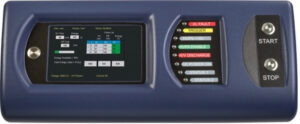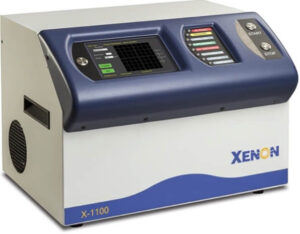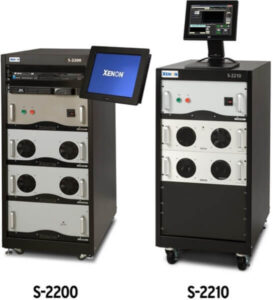Pulsed Light has been around for a long time, but these days research efforts are growing faster than ever. R&D labs in companies, universities, and government are exploring a myriad of applications such as decontaminating and fortifying food products, sanitizing the air in buildings, curing materials, and more. Across the world and across industries, researchers are finding new applications for Pulsed Light every day.
Many factors are driving this research boom, including the fact that Pulsed Light applications are often directly related to public health and safety. But there’s also an important technology enabler that’s helping to drive this research as well, and that’s the XENON X-1100. First introduced in 2016, this benchtop device has accelerating Pulsed Light research in laboratories around the world by providing a combination of state-of-the-art technology, intuitive controls, and a price that is affordable for most facilities.
What’s behind this remarkable system, and why is it having such an impact?
Designed for R&D scientists and engineers
XENON is the original Pulsed Light company, with thousands of customers and many decades of experience. All of this knowledge went into making the X-1100 the ideal R&D tool.
Dr. Saad Ahmed, XENON’s VP of Operations, explains that the system was developed specifically to meet the needs of researchers: “There just wasn’t a simple enough R&D solution on the market, so we set about to address that. We knew the unit had to be small and compact to fit into a typical crowded lab. It also needed to be plug and play, deployable with a range of equipment. Finally, it needed to be intuitive to learn and use.”
This last goal was especially important. Dr. Ahmed wanted to make the new system as easy to use as a phone app. As he explains it, “You don’t need a manual to know how to use an app. You just go to the download store and tap the icon. We wanted to bring that ease of use to Pulsed Light.”

Easy-to-use interface simplifies Pulsed Light research.
Embraced by researchers
With those ideas in mind, the team at XENON developed the X-1100, the lowest-cost programmable Pulsed Light product on the market. It’s compact and plugs into a standard outlet, with simple controls for pulse duration and voltage, and a touchscreen with a pre-installed app to get users started. The X-1100 is equipped with a fully functioning PC, so it really is as easy to use as your average mobile app.

A complete Pulsed Light system in a benchtop package.
The X-1100 has been embraced by the R&D community and hundreds of units are now in use around the world. According to Dr. Ahmed: “A lot of the complexity behind the machine is hidden from the user. All they need to do is input how much energy and what kind of pulse they want. Then the system figures out the calculations needed to accomplish it. The system makes it very easy for R&D people who don’t want to deal with the complex math behind Pulsed Light. They just want to get on with the test.”
XENON has added several features since the X-1100’s introduction. “It’s mostly mature technology,”, says Dr. Ahmed, “but we’re still finding ways to improve it. Some have requested things like an interface for an external device to tell the X-1100 to flash, or wireless control of basic operations. These features are now built in.”
What if you need more power?
The X-1100 provides a fair amount of power (up to 9 Joules/cm2), but some researchers need more power or need to treat larger areas. The S-2200 and S-2210 fill those needs. These systems are not as simple to use as the X-1100, but they offer many more options for configuring and delivering Pulsed Light energy. Unlike the X-1100, which powers from a wall outlet, the S-2000 series devices use a 3-phase power line on a rack-based system. Though these systems generate greater power and more control, they also require a deeper understanding of photonics by the user.

Getting started
Using Pulsed Light, researchers are finding new ways to make a difference, whether it’s helping protect people from airborne disease, chemical-resistant bacteria, and foodborne illnesses, or developing the next breakthrough in printed electronics or solar cell manufacture.
The XENON X-1100 makes it easy to get started, and the company’s scientists and engineers are ready to help with support and technical knowledge. To learn more, contact XENON today.
Pulsed Light has been around for a long time, but these days research efforts are growing faster than ever. R&D labs in companies, universities, and government are exploring a myriad of applications such as decontaminating and fortifying food products, sanitizing the air in buildings, curing materials, and more. Across the world and across industries, researchers are finding new applications for Pulsed Light every day.
Many factors are driving this research boom, including the fact that Pulsed Light applications are often directly related to public health and safety. But there’s also an important technology enabler that’s helping to drive this research as well, and that’s the XENON X-1100. First introduced in 2016, this benchtop device has accelerating Pulsed Light research in laboratories around the world by providing a combination of state-of-the-art technology, intuitive controls, and a price that is affordable for most facilities.
What’s behind this remarkable system, and why is it having such an impact?
Designed for R&D scientists and engineers
XENON is the original Pulsed Light company, with thousands of customers and many decades of experience. All of this knowledge went into making the X-1100 the ideal R&D tool.
Dr. Saad Ahmed, XENON’s VP of Operations, explains that the system was developed specifically to meet the needs of researchers: “There just wasn’t a simple enough R&D solution on the market, so we set about to address that. We knew the unit had to be small and compact to fit into a typical crowded lab. It also needed to be plug and play, deployable with a range of equipment. Finally, it needed to be intuitive to learn and use.”
This last goal was especially important. Dr. Ahmed wanted to make the new system as easy to use as a phone app. As he explains it, “You don’t need a manual to know how to use an app. You just go to the download store and tap the icon. We wanted to bring that ease of use to Pulsed Light.”

Easy-to-use interface simplifies Pulsed Light research.
Embraced by researchers
With those ideas in mind, the team at XENON developed the X-1100, the lowest-cost programmable Pulsed Light product on the market. It’s compact and plugs into a standard outlet, with simple controls for pulse duration and voltage, and a touchscreen with a pre-installed app to get users started. The X-1100 is equipped with a fully functioning PC, so it really is as easy to use as your average mobile app.

A complete Pulsed Light system in a benchtop package.
The X-1100 has been embraced by the R&D community and hundreds of units are now in use around the world. According to Dr. Ahmed: “A lot of the complexity behind the machine is hidden from the user. All they need to do is input how much energy and what kind of pulse they want. Then the system figures out the calculations needed to accomplish it. The system makes it very easy for R&D people who don’t want to deal with the complex math behind Pulsed Light. They just want to get on with the test.”
XENON has added several features since the X-1100’s introduction. “It’s mostly mature technology,”, says Dr. Ahmed, “but we’re still finding ways to improve it. Some have requested things like an interface for an external device to tell the X-1100 to flash, or wireless control of basic operations. These features are now built in.”
What if you need more power?
The X-1100 provides a fair amount of power (up to 9 Joules/cm2), but some researchers need more power or need to treat larger areas. The S-2200 and S-2210 fill those needs. These systems are not as simple to use as the X-1100, but they offer many more options for configuring and delivering Pulsed Light energy. Unlike the X-1100, which powers from a wall outlet, the S-2000 series devices use a 3-phase power line on a rack-based system. Though these systems generate greater power and more control, they also require a deeper understanding of photonics by the user.

Getting started
Using Pulsed Light, researchers are finding new ways to make a difference, whether it’s helping protect people from airborne disease, chemical-resistant bacteria, and foodborne illnesses, or developing the next breakthrough in printed electronics or solar cell manufacture.
The XENON X-1100 makes it easy to get started, and the company’s scientists and engineers are ready to help with support and technical knowledge. To learn more, contact XENON today.
